12 Everyday Carry (EDC) Mistakes You’re Probably Making (and How to Fix Them)

Avoid These Everyday Carry Mistakes to Build the Perfect EDC Kit
Everyday Carry (EDC) isn’t just about the tools you carry—it’s about how well those tools work for you. It’s a philosophy of preparedness, efficiency, and adaptability, but even the most experienced EDC enthusiasts can fall into some pretty hilarious (and occasionally frustrating) traps. Who hasn’t proudly packed their kit, only to realize they’re lugging enough gear to qualify for a month-long expedition?
It’s shockingly easy to go from “prepared” to “overwhelmed.” Overpacking, skipping routine maintenance, or building a setup that doesn’t match your lifestyle can turn your sleek, intentional carry into a clunky mess. But here’s the good news: every misstep is an opportunity to refine, upgrade, and learn.
In this guide, we’ll unpack the 12 most common EDC mistakes and show you how to avoid them. Along the way, we’ll sneak in some pro tips to help you streamline your setup, carry smarter, and maybe even earn a nod of approval from your fellow EDC enthusiasts. Whether your gear needs a full overhaul or just a few thoughtful tweaks, these strategies will help you create an EDC that matches your lifestyle and always has your back.
Mistake 1: Overpacking and Redundancy
The Issue: Too much gear slows you down and makes your EDC inefficient
It’s a classic rookie mistake: cramming every gadget, tool, and “just in case” item into your EDC until your pockets feel like a survivalist’s treasure chest. Overpacking doesn’t just make your carry heavier—it slows you down and complicates access to the tools you actually need. And redundancy? While a backup flashlight or pen might seem smart, carrying three of each is just overkill.
The Fix: Streamline your gear with multi-purpose tools and essentials
Streamline your gear by focusing on versatility. Ask yourself: What do I use most often? What tools can serve multiple purposes? Multi-tools like Leatherman or compact, customizable key organizers can consolidate your essentials without sacrificing functionality. Pare down single-use items and think critically about what truly earns its place in your setup.
Pro Tip: Audit your EDC monthly to cut out unused items
Perform a “gear audit” once a month. Lay out your everyday carry (EDC) and identify tools you haven’t used. Place those items in a “rotation bin.” If they don’t make it back into your carry within 30 days, they probably aren’t essential.
A Cautionary Tale: An EDC enthusiast streamlined his overloaded kit for peak efficiency
Mark, an experienced EDC enthusiast, prided himself on being prepared for every scenario. However, his setup had ballooned into a pocket-bursting collection of duplicate tools—two multitools, three flashlights, and a backup pen, just in case. One day, while addressing a mechanical issue on his bike, he found himself wasting precious time digging through clutter to locate the right tool. Frustrated by the inefficiency, Mark re-evaluated his carry and replaced redundant items with a high-quality multitool and a tactical pen that doubled as a flashlight. By consolidating his gear, Mark improved both accessibility and functionality, proving that minimalism and readiness can go hand in hand.
Mistake 2: Disorganized or Inaccessible Carry
The Issue: Poor organization makes essential tools hard to find when you need them
An EDC kit is only as good as your ability to access it. Disorganized or inaccessible tools slow you down, especially in emergencies when every second counts. Imagine scrambling to find a flashlight buried under cables or fumbling with loose items in a cluttered bag—it’s frustrating, inefficient, and could even leave you unprepared when it matters most.
The Fix: Use organizers, modular systems, or gear with designated compartments
Combat disorganization by investing in solutions that allow you to assign specific locations for each item. Modular systems and pouches with elastic loops, dividers, and MOLLE webbing make it easy to separate and secure your gear. For everyday use, consider gear like a SCOTTeVEST, which integrates numerous hidden pockets for optimal organization without adding bulk.

Key considerations include:
-
Modular EDC Pouches: Compact pouches designed for EDC can house essentials like power banks, pocket tools, and first-aid items while preventing them from shifting.
-
Streamlined Carry Options: Tools like key organizers, compact multitools, slim wallets, and lightweight pens reduce clutter while remaining accessible.
For your carry system to truly shine, practice is essential. Regularly rehearse retrieving high-use items like your flashlight or multitool with one hand. Over time, this builds muscle memory, ensuring seamless operation under pressure.
Pro Tip: Assign each tool a “home” to reduce clutter and increase speed
Adopt the “home system” for your EDC. Frequently used tools should always occupy the same position—whether it’s a jacket pocket, a pouch slot, or a specific loop in your bag. This eliminates guesswork and makes retrieval instinctive. Using color-coded or labeled compartments can enhance accessibility, especially in larger kits.
A Cautionary Tale: An educator redefined her carry for rapid response in emergencies
Lisa, a high school teacher and EDC enthusiast, carried an assortment of tools for her daily needs but lacked a clear organization system. During a school-wide blackout, she struggled to locate her flashlight amid a cluttered bag filled with loose items. The experience highlighted the importance of rapid accessibility in high-pressure situations. Lisa upgraded her system to include a modular EDC pouch with specific compartments for each tool and practiced accessing them under simulated emergency conditions. Her reorganized setup allowed her to locate critical items in seconds, ensuring her readiness for any situation.
Mistake 3: Neglecting Multi-Functionality
The Issue: Single-use tools add unnecessary bulk and limit your EDC’s versatility
Carrying too many single-purpose tools can weigh you down and clutter your carry without significantly improving your readiness. An EDC focused on multi-functionality reduces bulk while ensuring you’re prepared for a wide range of situations. Why carry three separate tools when one quality multitool can handle it all?
The Fix: Prioritize versatile gear to maximize utility and minimize weight
Invest in gear that combines multiple functions without compromising quality. A well-designed multitool, for example, can replace separate screwdrivers, pliers, and scissors. Similarly, modular EDC systems let you tailor your carry to your needs while keeping everything streamlined.
Examples of multifunctional gear include:
-
Multitools: Leatherman or Victorinox tools are excellent for combining blades, screwdrivers, pliers, and more into a single device.
-
Tactical Pens: These can serve as a writing tool, glass breaker, and self-defense option in one compact package.
-
Keyport Modular Setup: The Keyport Pivot 2.0 modular key organizer holds up to 8 keys and tools, integrating essentials like the Pocket Flare 2.0 Mini-Flashlight Module, NEBA Pocketknife Module, MOCA 10-in-1 Multi-Tool Insert, and even tech options like a YubiKey or Digital ME Key e-business card. This eliminates the need to carry separate items, keeping your EDC compact and highly functional.
Pro Tip: Look for durability and ease of use in multifunctional gear
When evaluating multi-purpose tools, prioritize those made from high-quality materials like stainless steel or titanium. Check that all components are easy to deploy and function as intended—compromise in quality or usability can leave you frustrated when you need it most.
A Cautionary Tale: A journalist optimized her workflow with modular, multifunctional tools
Sara, a freelance journalist, relied on an assortment of single-purpose tools: a flashlight, utility blade, and screwdriver, each carried separately. Juggling these items during a late-night assignment proved cumbersome and inefficient. Recognizing the need for an upgrade, Sara transitioned to a Keyport Pivot 2.0 modular setup with integrated tools like the Pocket Flare 2.0 Mini-Flashlight Module, NEBA Pocketknife Module, MOCA 10-in-1 Multi-Tool, and Pen Insert. She also incorporated the Digital ME Key 2.0 to share her digital business card, providing contacts with instant access to her coordinates and portfolio links. This eliminated the need for outdated paper business cards and enhanced her professional presence. The streamlined, multifunctional setup not only reduced her carry weight but also elevated her efficiency in the field.
Mistake 4: Failing to Update or Test Gear
The Issue: Outdated or untested gear can fail when you need it most
EDC tools are designed to be reliable, but even the best gear isn’t immune to wear and tear. Neglecting to test your gear regularly or failing to upgrade outdated items can leave you unprepared during critical moments. Whether it’s a flashlight with dead batteries, a blade dulled from neglect, or a gadget that no longer meets your needs, outdated tools can quickly turn from assets to liabilities.
The Fix: Test your gear periodically and replace outdated or worn-out items
Schedule regular “gear check” sessions to inspect, clean, and test each item in your EDC. Replace anything that no longer works as intended or has become obsolete due to advances in technology. For instance:
- Blades and multitools: Sharpen blades, tighten loose components, and oil moving parts for smooth operation.
- Flashlights: Check batteries and upgrade to LED models for superior brightness and efficiency.
- Tech tools: Replace aging tech like outdated USB drives with modern, faster, and more secure options.
Modular systems like Keyport make upgrades seamless—swap out individual components instead of replacing an entire setup.
Pro Tip: Set a quarterly reminder to test and update your gear
Make it a habit to test your EDC every three months. Simulate real-world scenarios, including survival scenarios, to ensure your tools work as expected. For example, use your multitool to open packages, test your flashlight in low-light conditions, and check that any tech-related items (like USB drives or Bluetooth trackers) are functioning properly.
A Cautionary Tale: A cyclist upgraded his toolkit after a critical failure
Kevin, an avid cyclist, depended on a well-worn multitool to handle on-the-go repairs. Over time, however, the tool’s components began to degrade—an issue Kevin overlooked during routine rides. One day, a loose pedal bolt required tightening, but the hex wrench on his multitool was stripped, rendering it useless. Forced to walk several miles home, Kevin learned the importance of gear maintenance and periodic updates. He replaced the outdated multitool with a professional-grade version featuring reinforced steel components and began a quarterly testing regimen to ensure all his gear was in optimal condition. Now, Kevin rides with confidence, knowing his tools can withstand any challenge.
Mistake 5: Ignoring Personal Needs and Lifestyle
The Issue: A mismatched EDC setup fails to meet your unique daily challenges
EDC is not one-size-fits-all. Carrying gear that doesn’t align with your environment or routine is not just impractical—it can leave you unprepared for the situations you’re most likely to face. A rugged survival knife might look cool, but it’s probably not the best tool for an urban commuter who needs a portable charger and a multitool instead.
The Fix: Tailor your EDC to your environment and daily activities
Start with a “needs assessment.” Consider your daily routine, work environment, and the scenarios you’re most likely to encounter. For example:
- Urban Commuters: Focus on tech essentials like portable chargers, compact flashlights, and multi-purpose tools for office or transit needs.
- Outdoor Enthusiasts: Opt for rugged, weatherproof gear such as survival knives, waterproof flashlights, and fire-starting tools.
- Parents: Include practical items like compact first-aid kits, baby wipes, and foldable multitools for on-the-go problem-solving.
A modular system like Keyport can help you customize your carry for specific needs, from everyday urban tools to tech-focused solutions.
Pro Tip: Test your EDC in real-world scenarios to refine your setup
After tailoring your EDC, use it in everyday situations to identify gaps. Did you have the right tool for opening packages, but not for jotting down notes? Real-life testing will highlight areas where you can make adjustments to better suit your lifestyle.
A Cautionary Tale: A hiker learned to align gear with the great outdoors
Ben, an avid hiker, once carried a sleek leather wallet and luxury pen in his kit—gear more suited to an office than the trails. During a rainy hike, the wallet soaked through, ruining key documents, and the pen refused to write in the damp conditions. Afterward, Ben upgraded to a waterproof case and an all-weather pen, ensuring he’s prepared for his outdoor adventures without sacrificing functionality.
Mistake 6: Prioritizing Style Over Functionality
The Issue: Choosing gear for aesthetics can compromise performance
While there’s no harm in wanting your EDC to look good, prioritizing style over function can leave you with tools that fail under pressure. That sleek wallet multitool may look great on Instagram, but if it bends or breaks during use, it’s more of a liability than an asset.
The Fix: Balance form and function for dependable, stylish gear
Seek out gear that blends performance with aesthetics. Many brands now offer tools made from premium materials like titanium, stainless steel, or aerospace-grade aluminum that look as good as they perform. Evaluate items based on their durability, ease of use, and proven reliability. Remember, functionality should always come first.
Examples of function-forward stylish gear:
- Tactical Pens: Sleek designs that double as a self-defense tool or glass breaker.
- EDC Knives: Modern pocket knives with minimalist aesthetics and rugged blades.
- Keyport Modular Systems: Compact and visually appealing, these systems integrate multiple tools without compromising style or reliability.

Pro Tip: Check reviews and real-world performance tests before buying
Before purchasing EDC gear, look for reviews from trusted sources or user testimonials. Focus on performance under realistic conditions—tools that hold up to wear, weather, and frequent use are worth the investment.
A Cautionary Tale: A designer replaced flashy gear with professional-grade tools
Emily, a graphic designer and seasoned EDC enthusiast, was drawn to a carbon fiber-inspired wallet multitool marketed for its sleek, minimalist design. However, during a field test involving light prying, the tool fractured at its pivot point, exposing its substandard construction. Realizing the importance of functional integrity, she upgraded to a titanium multitool with a reinforced design and tested tensile strength. The new tool not only met her practical needs but also retained the polished aesthetics she valued. Now, Emily carries gear that blends high performance with visual appeal, ensuring reliability without compromise.
Mistake 7: Ignoring Comfort and Ergonomics
The Issue: Bulky or awkward gear can cause discomfort and reduce usability
Carrying poorly designed or overly heavy tools might not seem like a problem at first, but over time, it can lead to fatigue, discomfort, and even reluctance to use your gear. An uncomfortable EDC isn’t just annoying—it’s impractical, undermining its entire purpose.
The Fix: Choose lightweight, ergonomic gear tailored for daily use
When selecting tools for your EDC, prioritize comfort and usability. Lightweight materials like aluminum and titanium can significantly reduce carry weight without sacrificing durability. Look for designs with ergonomic grips, rounded edges, and compact profiles that fit comfortably in your pockets or hands. Test how tools feel during extended use—your gear should enhance convenience, not hinder it.
Examples of ergonomic and lightweight gear include:
- Pens: Compact pens with ergonomic grips reduce hand fatigue during prolonged writing.
- Knives: EDC knives with contoured handles provide a secure, comfortable grip for repetitive tasks.
- Keyport Anywhere Tools: These modular tools allow you to carry only what you need, offering a slim, ergonomic profile that integrates essentials like a flashlight or multi-tool in a pocket-friendly format.
Pro Tip: Test your gear’s weight and feel before committing
Simulate real-world use by carrying your gear in its intended configuration for an entire day. Pay attention to discomfort from weight distribution, sharp edges, or awkward designs. Refine your setup based on your observations.
A Cautionary Tale: An engineer reworked his EDC for optimized comfort and performance
Daniel, a civil engineer frequently on job sites, carried an overbuilt multitool weighing nearly 10 ounces and a steel tactical flashlight with sharp bezel edges. While both items offered extensive functionality, the cumulative weight caused noticeable strain during all-day wear, and the flashlight’s aggressive design repeatedly tore through his pocket lining. After consulting user reviews and technical guides, Daniel upgraded to a titanium multitool with rounded edges, reducing weight by 40%, and replaced his flashlight with an anodized aluminum model featuring a smooth bezel and a recessed tail switch for pocket safety. The ergonomic improvements allowed Daniel to maintain full functionality while reducing fatigue and wear, proving that even minor design adjustments can have significant practical benefits.
Mistake 8: Overlooking Legal and Travel Restrictions
The Issue: Carrying restricted tools can lead to confiscation or legal trouble
Not all EDC tools are allowed everywhere. Whether it’s a knife with a blade longer than local laws permit or multitools that include prohibited features, failing to research the legal and travel restrictions in your area—or your destination—can result in fines, confiscation, or worse.
The Fix: Familiarize yourself with local laws and carry TSA-compliant tools for travel
Before heading out, review the regulations for your destination. For travelers, TSA-compliant gear is essential to ensure you pass through security without issues. Opt for tools specifically designed to meet legal requirements:
- Knives: Avoid carrying blades in areas where they are restricted, and consider alternatives like safety cutters.
- Multitools: Choose options without knives for TSA compliance, like the Keyport Slide, which offers modules such as a flashlight or MOCA 10-in-1 Multi-Tool Insert.
- Tech Tools: Items like battery banks or USB drives should comply with airline or workplace regulations.
Pro Tip: Maintain a dedicated travel EDC kit
Keep a separate set of tools specifically designed for travel. TSA-approved gear ensures you’re prepared without risking confiscation at security checkpoints. Store it in a labeled pouch to make packing easier for every trip.
A Cautionary Tale: A business traveler lost essential tools at airport security
David, a consultant traveling for work, carried his favorite multitool in his bag without realizing it included a non-compliant knife blade. At the airport, security confiscated the tool, leaving David without his go-to gear. Learning from the incident, David assembled a TSA-compliant travel EDC kit featuring the Keyport Pivot with a Pocket Flare Module, MOCA 10-in-1 Multi-Tool Insert, and YubiKey. The streamlined kit not only passed security seamlessly but also met his professional needs on the road.
Mistake 9: Choosing Low-Quality Gear
The Issue: Cheap, poorly made tools are prone to failure
Selecting low-cost EDC items might save you money upfront, but poorly constructed gear often breaks or fails under stress. A weak blade, unreliable flashlight, or flimsy multitool could leave you stranded when you need them most. Durability and quality should never be compromised in your everyday carry setup.
The Fix: Invest in high-quality gear built to last
Look for tools made from premium materials like stainless steel, titanium, or aircraft-grade aluminum. Research brands known for rigorous quality control and read reviews to ensure the tools you choose perform well under demanding conditions. Gear that offers warranties or lifetime guarantees is often a good indicator of reliability.
Consider these key points when selecting high-quality EDC items:
- Knives: Seek out blades with corrosion-resistant steel and solid locking mechanisms.
- Flashlights: Choose models with LED technology and rugged, weatherproof casings.
- Multitools: Focus on tools with reinforced pivot points and secure locking features for safety.
Pro Tip: Test gear durability before relying on it
Before integrating any tool into your setup, put it through its paces. Use knives to cut materials like rope or cardboard, test flashlights in wet or dusty conditions, and ensure multitools handle their advertised functions without issue.
A Cautionary Tale: An outdoor enthusiast learned the value of premium tools
Tom, a seasoned camper, purchased a budget multitool advertised as lightweight and versatile. During a trip, the tool’s pliers snapped while securing a tarp, and the screwdriver’s soft metal stripped after minimal use. Frustrated by the repeated failures, Tom replaced the multitool with a premium-grade option featuring reinforced stainless steel and precision engineering. The new tool proved its worth on subsequent trips, handling tough tasks like cutting wire and tightening bolts without issue. Tom’s experience underscored that quality gear is a long-term investment in reliability and peace of mind.
Mistake 10: Skipping Routine Maintenance
The Issue: Neglected tools degrade over time, reducing performance and reliability
Even the best EDC gear won’t last forever without proper care. Dirt, moisture, and wear can compromise functionality, whether it’s a dull knife blade, a flashlight with corroded batteries, or a multitool with stiff hinges. Skipping maintenance not only shortens the lifespan of your gear but also risks failure during critical moments.
The Fix: Establish a maintenance routine to keep your gear in top condition
Regular cleaning, sharpening, and lubrication can dramatically extend the life and performance of your EDC tools. Build a habit of inspecting your gear monthly and performing necessary upkeep. Key steps include:
- Knives: Sharpen blades using a whetstone or sharpening tool and clean them with oil to prevent rust.
- Flashlights: Replace batteries and clean contact points to ensure consistent brightness.
- Multitools: Apply lubricant to hinges and joints to maintain smooth operation and prevent sticking.
Pro Tip: Create a small EDC maintenance kit
Assemble a maintenance kit with essentials like a microfiber cloth, multitool lubricant, a compact sharpening stone, and replacement batteries. Keep it easily accessible, so upkeep becomes a seamless part of your routine.
A Cautionary Tale: A contractor restored his tools through diligent upkeep
Jack, a general contractor, relied on his multitool daily but neglected its maintenance for years. Over time, the tool’s hinges became stiff, the blade dulled, and corrosion began to form on the pliers. During a job, the tool failed to cut through wiring, delaying the project and forcing him to use inferior backup tools. Determined to prevent further issues, Jack restored the multitool with a thorough cleaning, lubrication, and blade sharpening. He also adopted a monthly maintenance schedule to keep his entire EDC in peak condition, ensuring no project stalls due to overlooked upkeep again.
Mistake 11: Failing to Plan for Emergencies
The Issue: A lack of emergency-focused tools leaves you vulnerable when the unexpected happens
Your EDC should prepare you for more than just everyday tasks—it should also include items for emergencies like power outages, car breakdowns, or personal safety situations. Neglecting this aspect of your setup can leave you unprepared in critical moments when seconds matter.
The Fix: Incorporate compact emergency tools into your setup
Focus on adding gear that balances practicality with preparedness. Items like compact flashlights, personal alarms, or mini first-aid kits don’t take up much space but can be lifesavers in unexpected situations. Consider tools that serve multiple emergency needs:
- Flashlights: A rechargeable flashlight ensures visibility in power outages or low-light situations.
- First-Aid Kits: Compact kits with bandages, antiseptic wipes, and pain relievers are easy to carry and invaluable in minor accidents.
- Emergency Tools: Tools like a whistle, a glass breaker, or a fire starter can make all the difference in survival scenarios.
Pro Tip: Periodically test and replace emergency items
Many emergency tools, such as batteries or first-aid supplies, have limited lifespans. Set reminders to test flashlights, check expiration dates on first-aid items, and ensure tools like whistles or fire starters remain functional.
A Cautionary Tale: A commuter’s compact emergency kit proved indispensable during a blackout
Rachel, an urban commuter, thought her EDC was complete until a sudden power outage left her stranded in a pitch-black parking garage. Without a flashlight or backup tools, she struggled to navigate her way to safety. After the incident, Rachel upgraded her carry with the Keyport Pivot equipped with the Pocket Flare Mini-Flashlight Module and added a personal alarm for safety. She also included a small power bank to keep her phone charged in emergencies. On a subsequent trip, the power bank saved her from being stranded with a dead phone, demonstrating the value of proactive preparation for the unexpected.
Mistake 12: Not Incorporating Modern Tech or Connectivity
The Issue: Overlooking tech tools limits functionality and convenience
In today’s world, technology is an integral part of preparedness. Failing to include modern tech like portable chargers, USB drives, or Bluetooth trackers in your EDC means missing out on tools that enhance both efficiency and peace of mind. The right tech can keep you connected, powered, and organized when it matters most.
The Fix: Add compact, reliable tech tools to your carry
Integrating tech doesn’t mean overloading your EDC. Focus on small, multifunctional devices that enhance your daily and emergency readiness. Examples include:
- Portable Chargers: Slim power banks ensure your devices stay charged throughout the day.
- Smart Trackers: Bluetooth-enabled devices like AirTags help locate lost items quickly.
- Digital Storage: Encrypted USB drives provide secure access to important files on the go.
Pro Tip: Regularly assess and update your tech tools
Technology evolves quickly, so periodically review your tech items to ensure they meet your needs. Replace older devices with faster, more efficient options and verify compatibility with current gadgets.
A Cautionary Tale: A tech-savvy traveler optimized his EDC with connectivity in mind
Jake, a frequent traveler, found himself in a bind after misplacing his backpack during a road trip. Without a way to track it, he spent hours retracing his steps before recovering it by chance. Determined to prevent future issues, Jake added a Bluetooth tracker to his bag and integrated the Keyport Pivot with a YubiKey for secure digital access on the go. He also upgraded to a slim power bank capable of charging multiple devices simultaneously. On a subsequent trip, the tracker helped him locate his misplaced bag within minutes, and the power bank kept his phone charged during an extended delay. Jake’s optimized tech setup ensured he stayed connected and prepared, no matter the challenge.
Mastering Your Everyday Carry: A Final Checklist
Every piece in your EDC should earn its place—not just for convenience but for practicality, efficiency, and preparedness. By addressing these 12 common mistakes, you can streamline your setup, maximize your gear’s utility, and ensure you’re ready for anything life throws your way.
Here’s your action plan to optimize your everyday carry:
- Perform a thorough gear audit to eliminate redundancies and unused items.
- Regularly test, maintain, and update your tools to ensure reliability.
- Tailor your EDC to your unique lifestyle, environment, and needs.
- Invest in high-quality, multifunctional tools that balance comfort, durability, and performance.
- Embrace modern tech to stay connected and prepared for emergencies.
Whether you’re a seasoned enthusiast or just starting out, these strategies will help you create an EDC setup that’s efficient, versatile, and truly your own. Ready to elevate your carry game? Explore innovative solutions from Keyport and start rethinking your kit today.
FAQs About Everyday Carry (EDC)
1. What is Everyday Carry (EDC)?
EDC refers to the essential items you carry daily to handle common tasks, emergencies, or specific situations. It often includes tools like multitools, flashlights, wallets, and key organizers.
2. How do I start building my EDC kit?
Start with the basics: a wallet, keys, phone, and a multitool or knife. From there, customize your setup based on your daily activities and environment.
3. How do I know what to include in my EDC?
Evaluate your daily needs and consider scenarios you frequently encounter. Items like a flashlight, pen, and portable charger are versatile essentials. Test your kit regularly to ensure it meets your needs.
4. What should I avoid in an EDC kit?
Avoid overpacking, carrying single-use tools unnecessarily, or selecting low-quality gear that may fail when you need it most. Ensure your gear complies with local laws and travel restrictions.
5. How often should I update my EDC?
Regularly test and update your EDC every 3-6 months. Check for wear and tear, replace outdated gear, and consider adding new tools that enhance your setup.
6. Are there any EDC tools specifically designed for women?
Yes! Many brands now offer compact and lightweight tools designed for smaller hands or discreet carry. Items like mini multitools, slim wallets, and stylish key organizers are popular options.
7. What’s the best way to carry EDC gear?
This depends on your preferences and activities. Options include pocket carry, key organizers like the Keyport Pivot, modular pouches, or clothing with integrated compartments like SCOTTeVEST.
8. How do I ensure my EDC is TSA-compliant?
For travel, avoid carrying knives, scissors, or other sharp tools. Opt for TSA-approved multitools or modular setups like the Keyport Slide with non-bladed inserts. You can learn more on the TSA's website.
9. Why is modular gear recommended for EDC?
Modular gear allows you to customize your carry for different scenarios. You can swap out components based on your needs, ensuring versatility and reducing bulk.
10. Can EDC gear be stylish and functional?
Absolutely! Many brands prioritize aesthetics alongside functionality. Look for gear made from premium materials like titanium or carbon fiber that balances form and performance.

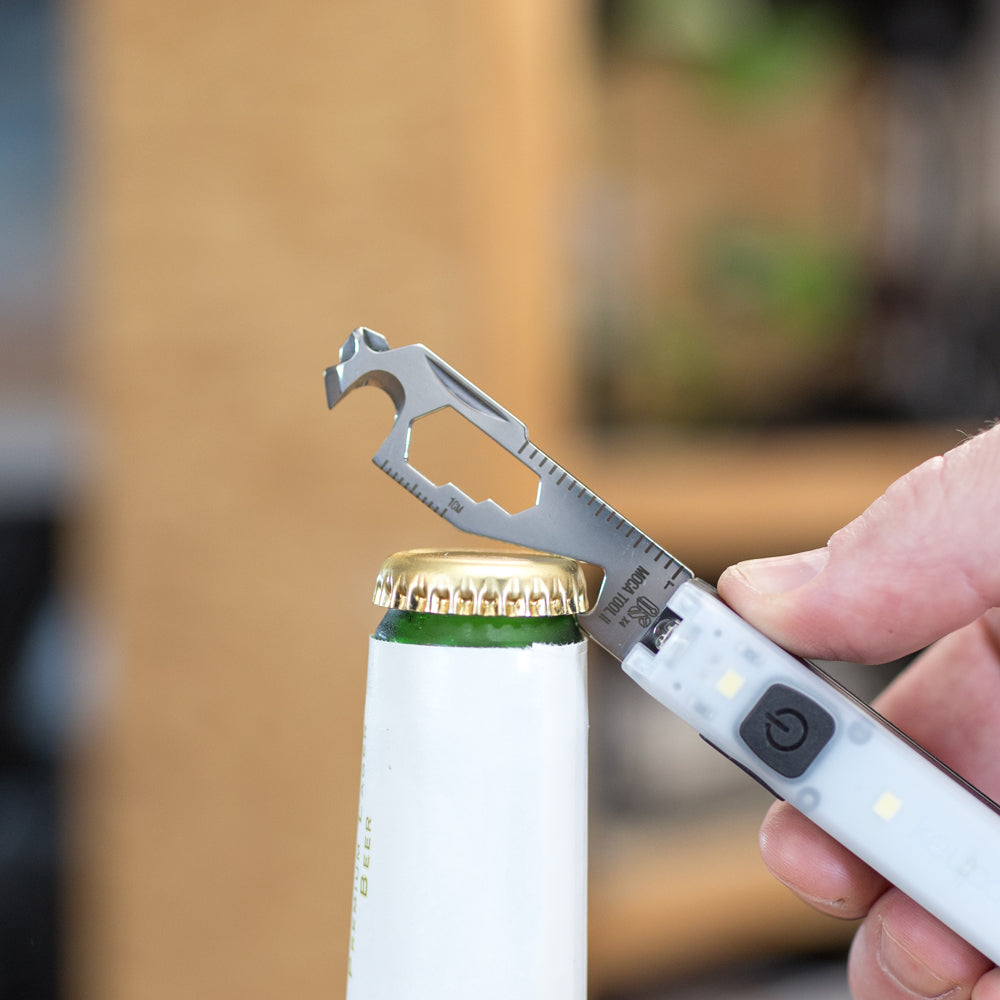
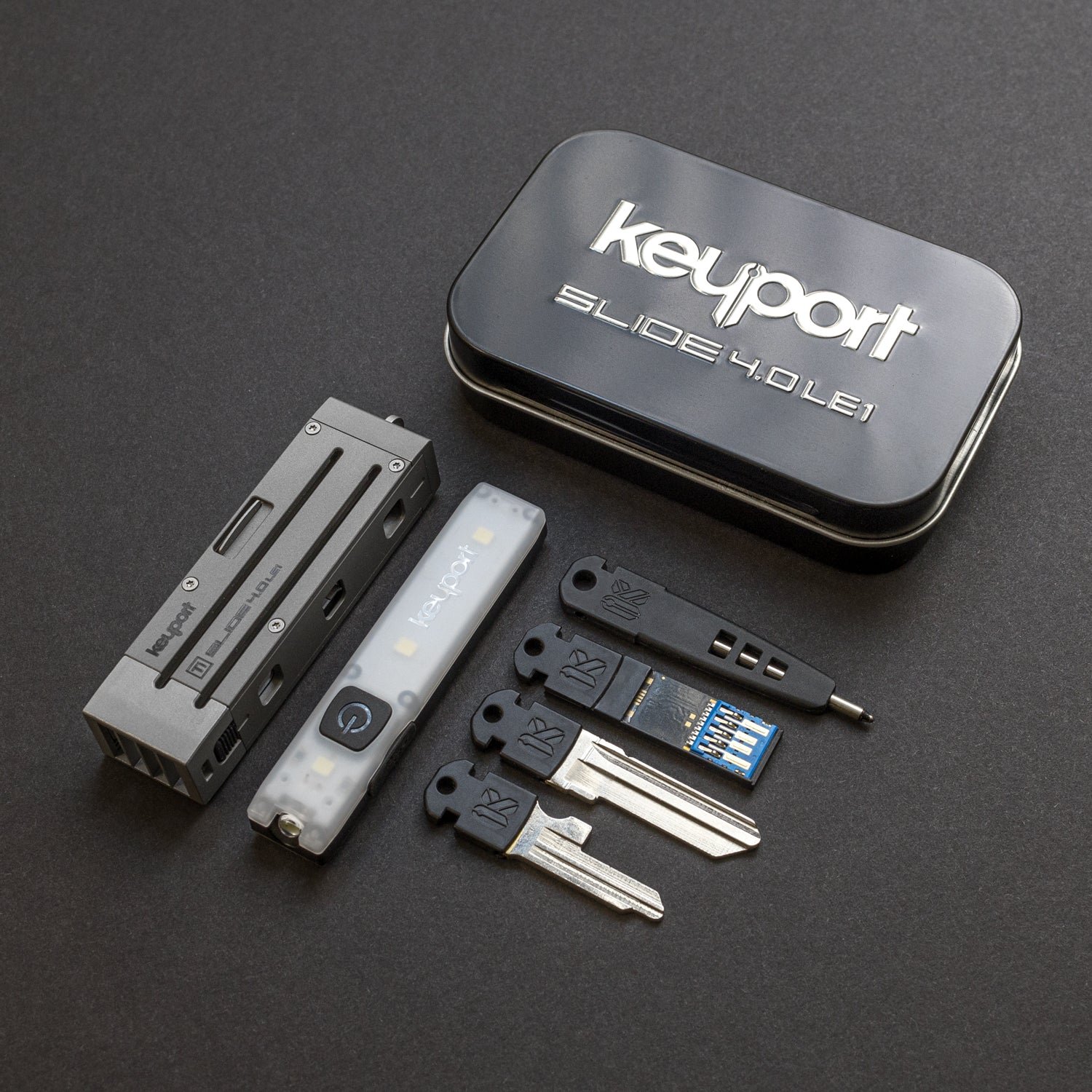
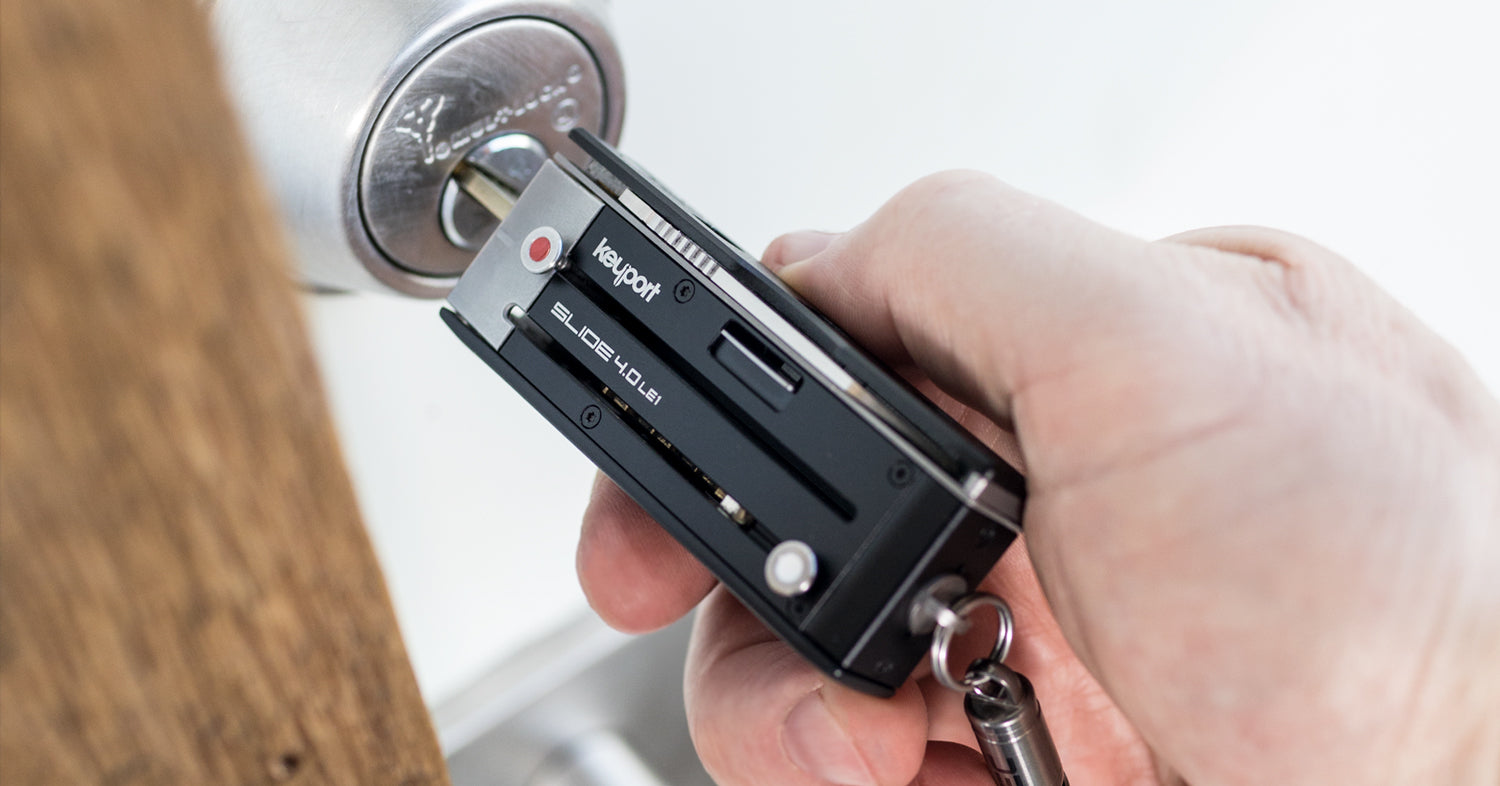
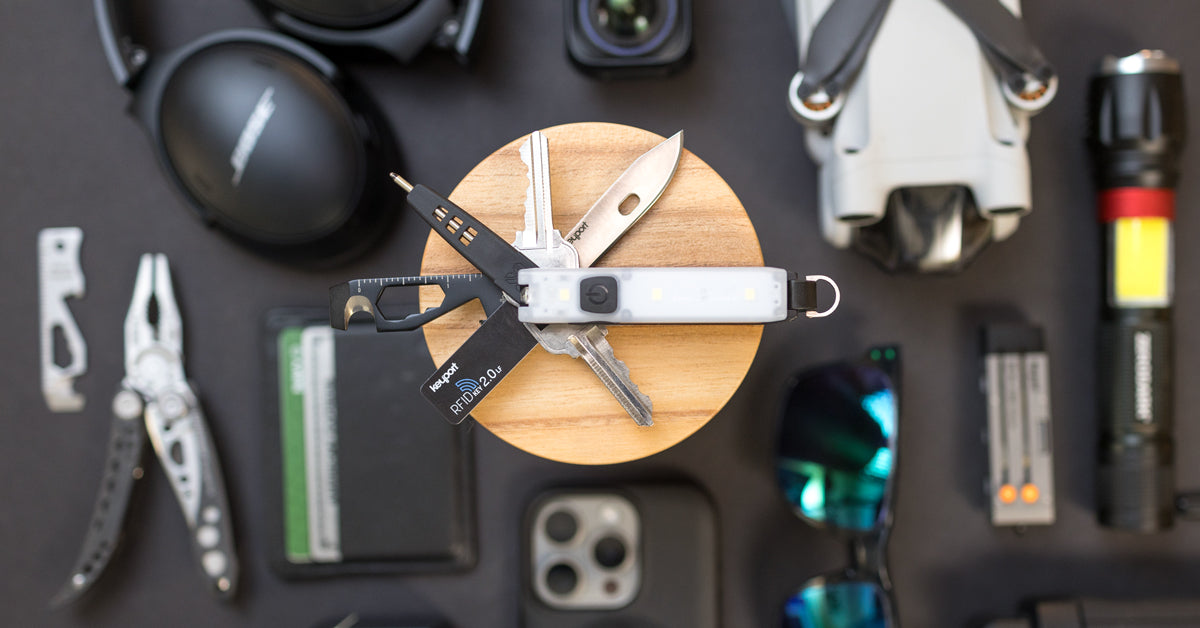

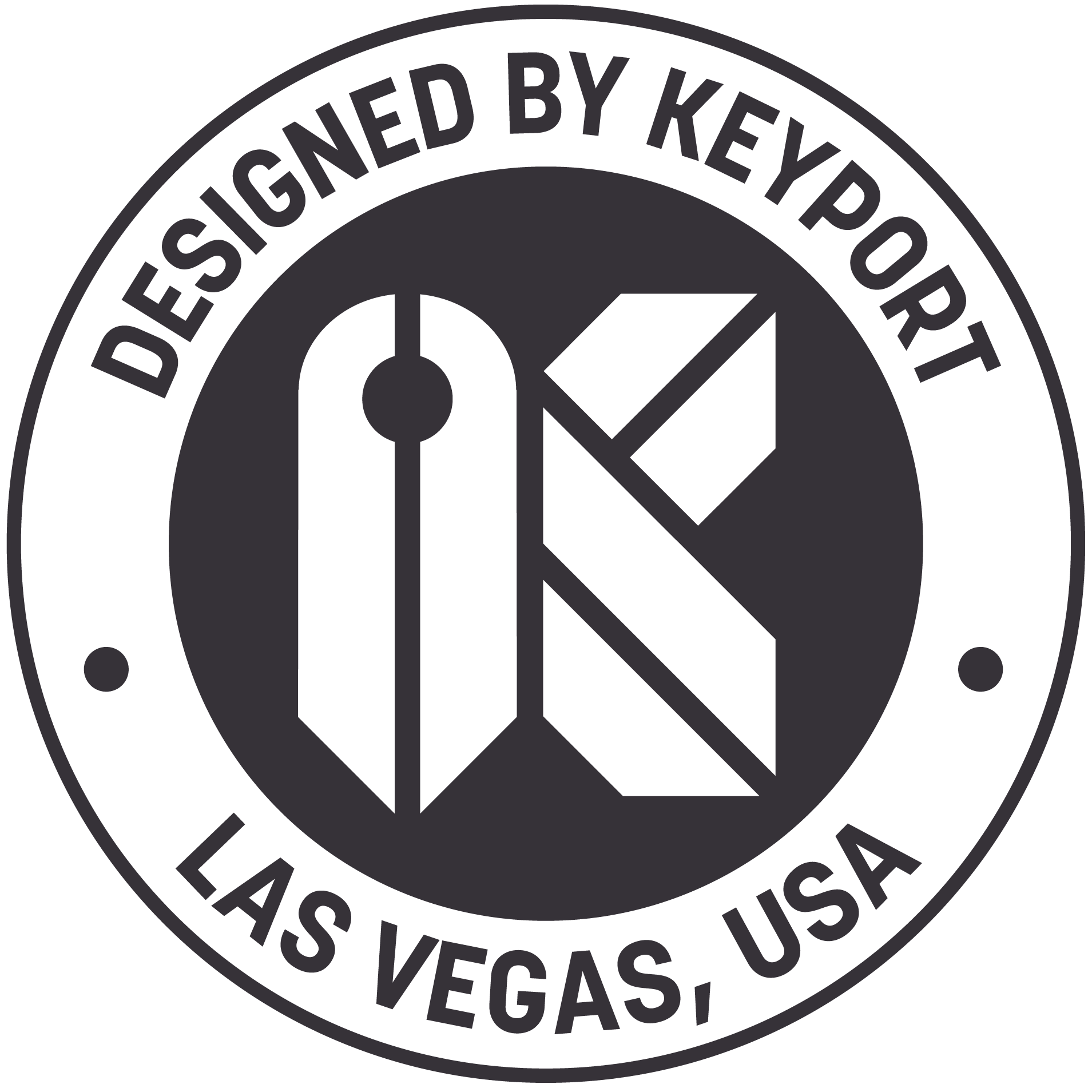
Leave a comment
This site is protected by hCaptcha and the hCaptcha Privacy Policy and Terms of Service apply.